Growing tomatoes is an excellent idea to keep your kitchen loaded with fresh, organic tomatoes. But how much sunlight do tomato seedlings need? Providing tomatoes–and tomato seedlings–with optimal lighting can sometimes be the deciding factor between a successful and a failed crop.
As soon as tomato seedlings sprout, they need exposure to bright light to develop optimally. Ideally, tomato seedlings need 12 to 18 hours of bright light each day to thrive. If direct sunlight is unavailable to the plants, place them under grow lights.
Though 12 to 18 hours of light is a good estimate, the development of tomato seedlings will also depend on the intensity of light and its source. It will also depend on the climate in your area. Let’s explore the different considerations involved in providing light to your tomato seedlings.
Since you’re growing tomatoes, you’ll probably want to check out our complete article on how to grow more tomatoes.
Tomato Seedlings Light Requirements
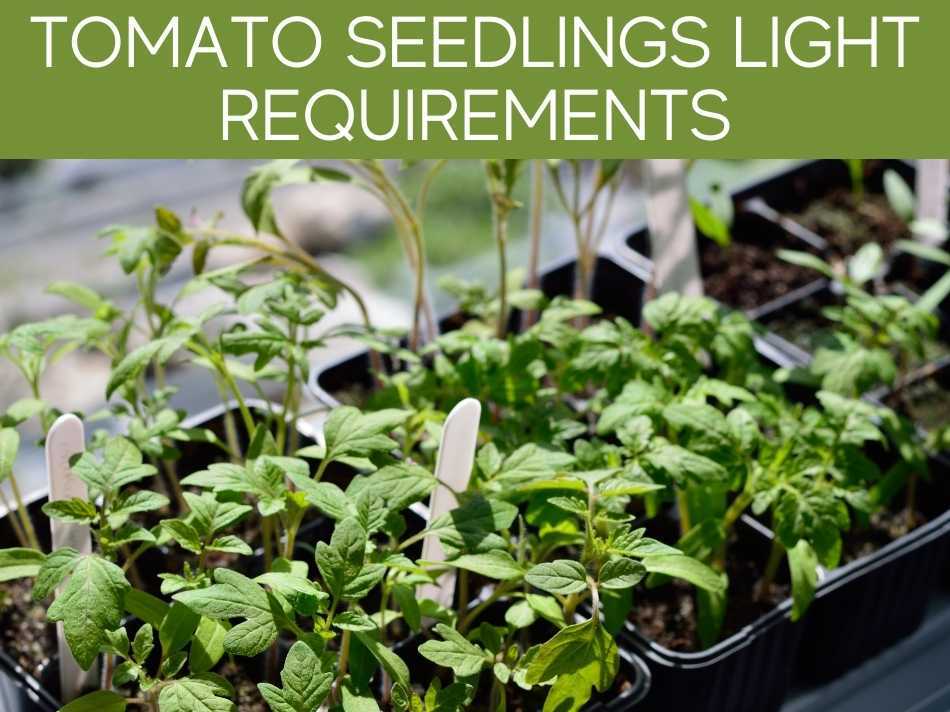
Plants are categorized into short-day plants (less than 12 hours of light per day), day-neutral plants (plants that flower regardless of the light duration) and long day plants (14 to 18 hours of light a day).
Tomatoes are long-day plants, which means that 14 to 18 hours of light are ideally best for them to thrive.
Although red and blue spectrums of light are most important for the development of tomato seedlings, they respond best to a full spectrum of light.
Natural sunlight includes a complete spectrum which is perfect for their growth.
If natural sunlight isn’t available optimally, the next best option is to use “full spectrum” grow lights that mimic the sun’s performance to grow tomato seedlings ideally until they are ready to go in the garden.
Hardening Off
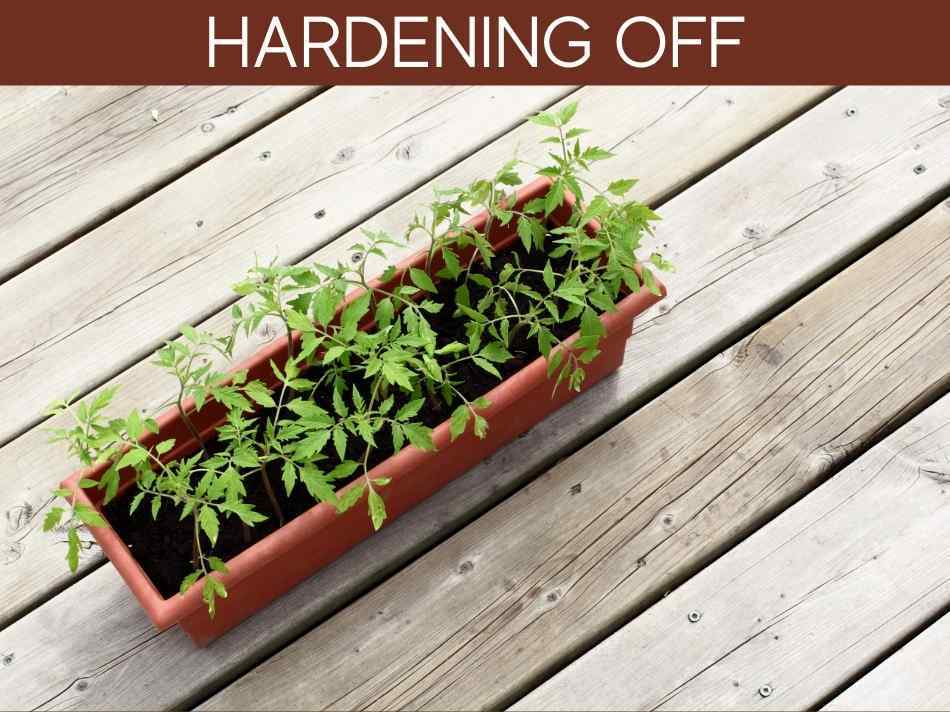
Tomato seedlings are typically started indoors to get a head start on the season before the weather is ideal for the plants to go in the garden.
Begin hardening off 1 to 2 weeks prior to setting the transplants out in the garden permanently.
Place them at a shaded spot initially, increasing the sun exposure gradually each day.
Once you’ve hardened them off properly, tomato plants will be able to tolerate the changes in light without damage.
If you’re growing in a greenhouse, you’ll want to check out our full article on growing tomatoes in a greenhouse.
How Much Light Do Tomato Plants Need? (compared to tomato seedlings)
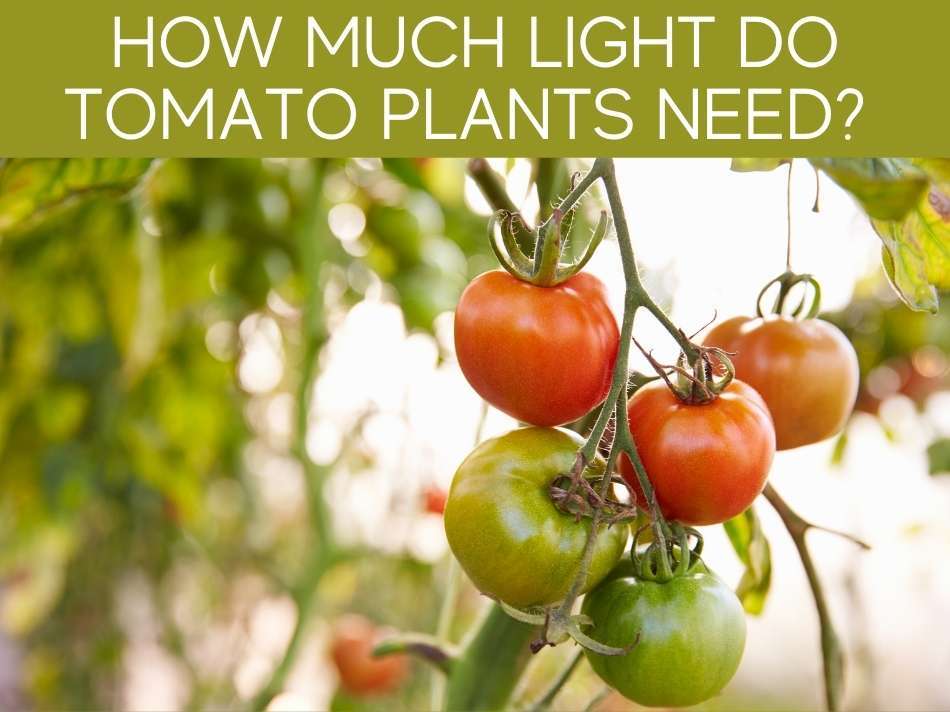
Sunlight Requirements For Tomato Plants
Tomato plants need plenty of sunlight to muster enough energy to produce fruit.
When transplanting in the garden, gardeners typically go for a location with southern or western exposure, where the sun shines for at least 7 hours each day.
Sun Exposure During Fruit Development
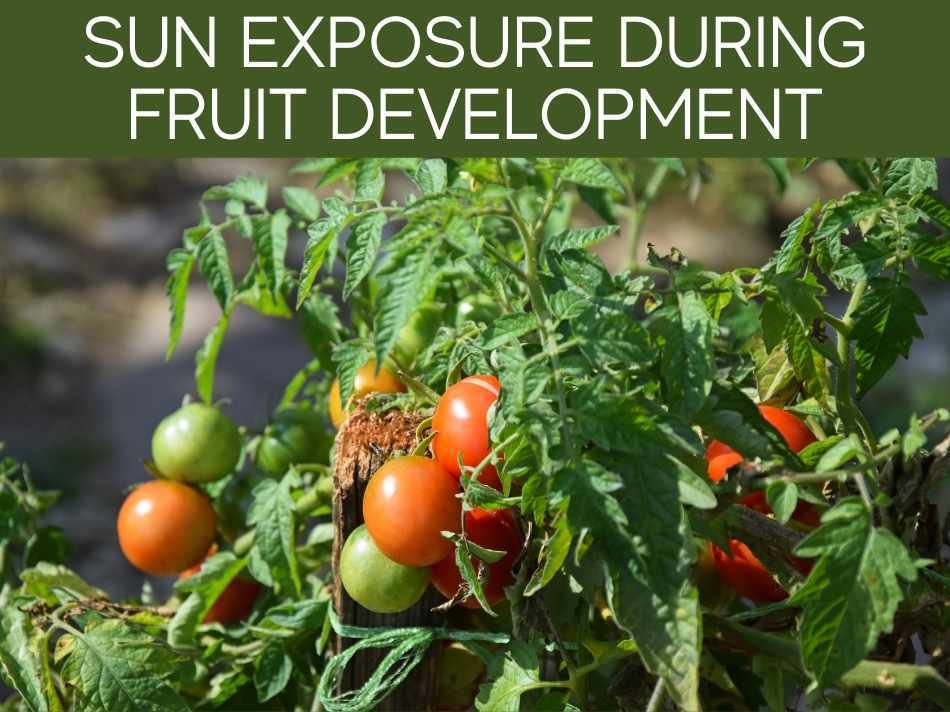
Excessive exposure to direct sunlight when the plants reach maturity, especially during hot, dry weather isn’t good for the fruit development.
In fact, when fruits are exposed to a lot of direct sunlight, a condition known as sunscalding may result.
How Do Tomato Seedlings Compare
Tomato seedlings are especially particular about their lighting requirements.
If they don’t get adequate lighting, their growth will be leggy and weaker plants will develop.
Together with exposure to bright light, growers must also make sure that the young seedlings aren’t overheated, which is a possibility if the plants are growing outdoors.
Midday sun may stress the young plants due to overheating.
You can either provide some shade during the hottest part of the day or grow seedlings indoors on a sunny window or under grow lights.
Cool fluorescent bulbs are best for growing healthy tomato transplants.
Place them no more than 2 to 3 inches away from the plants and leave them on for 14 to 16 hours everyday to make sure the plants grow strong and healthy.
Do Tomato Seedlings Need Direct Sunlight?
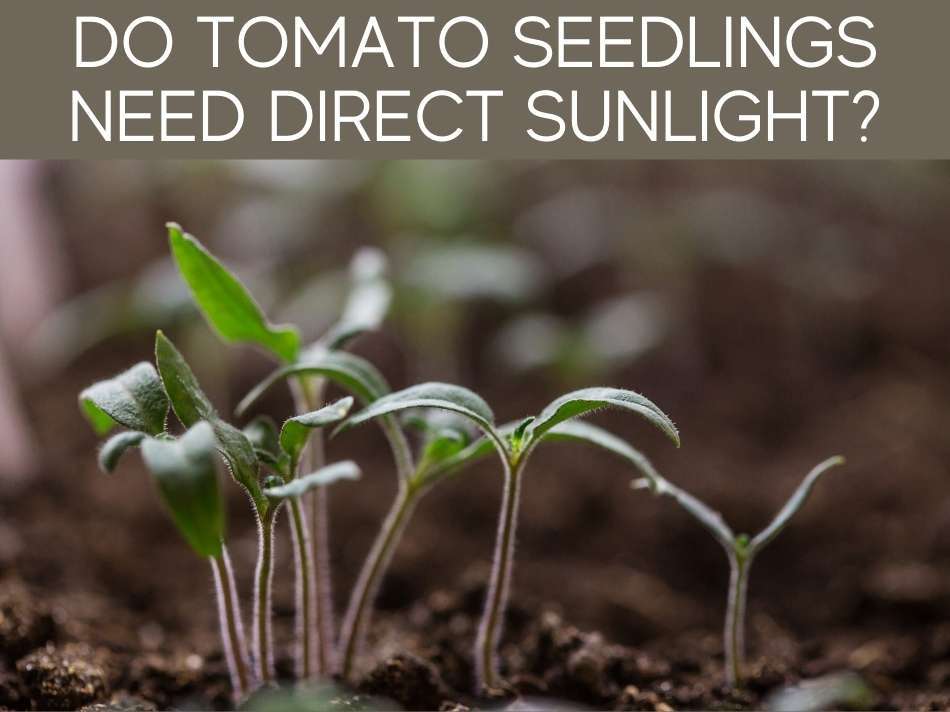
Tomato plants grow best in the sunniest spot in your garden. They’re sun-loving plants right from the time they sprout seedlings.
The idea is to provide intense light, especially during the early stages of their development.
Direct sunlight for several hours a day makes sure they start off strong and ascertain a healthy harvest.
If outdoor space isn’t available or if you’re growing tomatoes out of season, only a south-facing window may be able to provide enough lighting for healthy growth.
If you have a south-facing window that receives strong daily sunlight for at least 12 hours a day, it’s a good spot to grow your tomato seedlings.
However, your location on the map also plays a role in the intensity of daily light you recieve.
Further away from the equator, even the south-facing windows might not be receiving sunlight intense enough to grow healthy seedlings.
The number of hours of light will also be fewer than they’ll be in locations closer to the equator.
Grow Lights As An Alternative
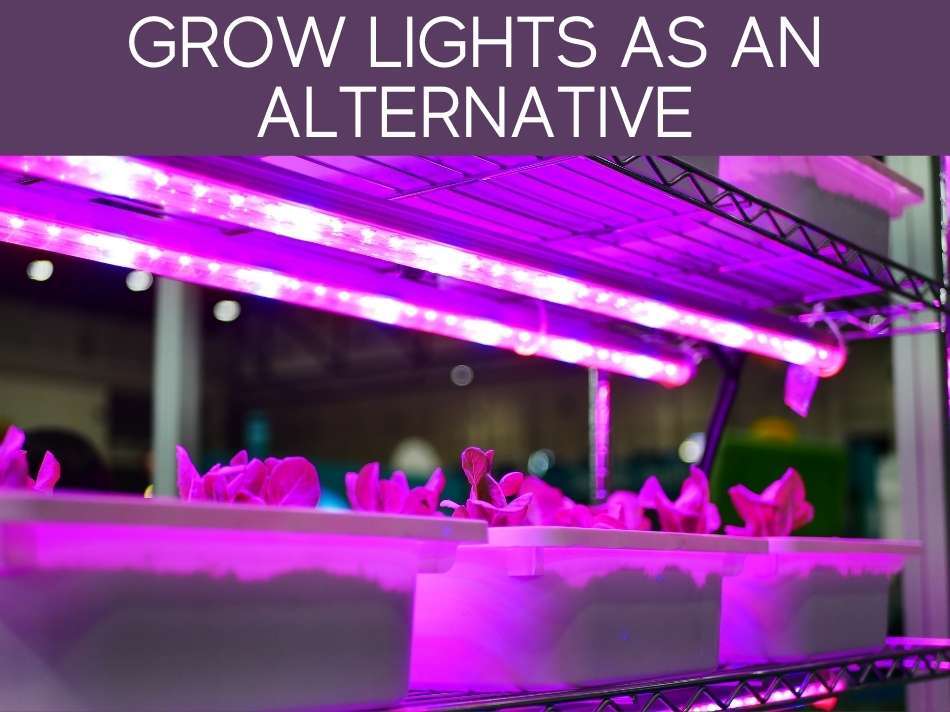
If there’s not enough direct sunlight reaching the tomato seedlings, growing them under grow lights is a good alternative.
When growing tomato seedlings under grow lights, most gardeners prefer fluorescent bulbs over other types of supplemental lighting.
These lights produce intense light but give off minimum heat to prevent damage to the young plants.
In short, though several hours of direct sunlight each day, without intense heat, is best for the tomato seedlings, they can also grow without it if there’s adequate supplemental lighting.
Can Tomato Seedlings Be In Direct Sunlight?
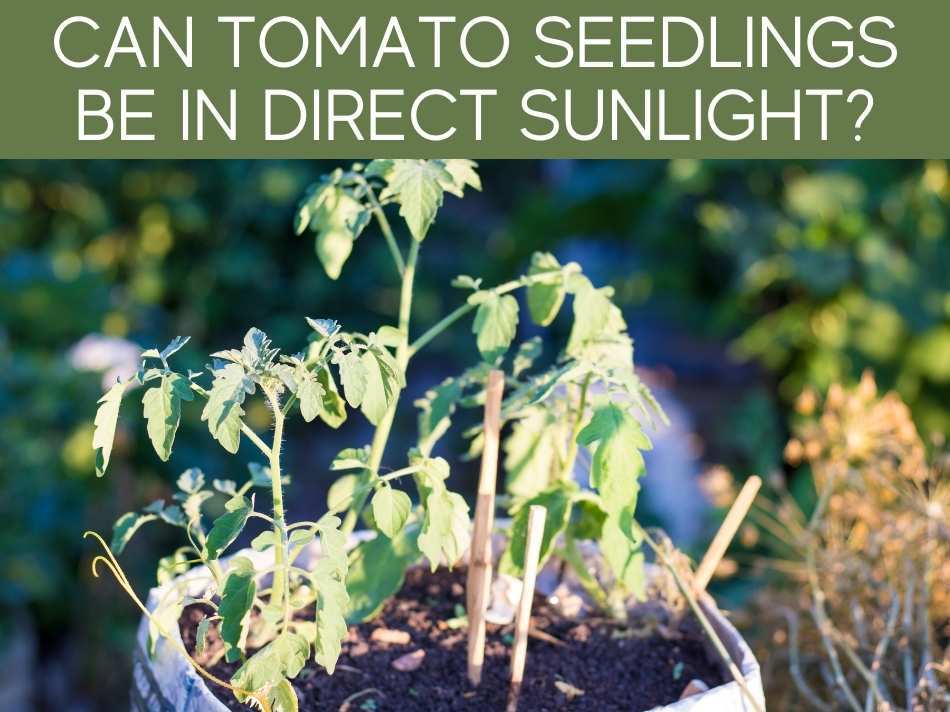
Yes, tomato seedlings can be in direct sunlight.
While some gardeners start the tomato plants indoors to achieve a longer growing season, those living in warmer climates often sow the seeds directly in the garden once the last frost of the spring has passed.
That said, there are some considerations to keep in mind.
Bright light from the sun is good for the plants.
However, depending on the climate in your region, if the heat and evaporation that comes along with the direct outdoor sunlight isn’t ideal for the young plants, your tomato seedlings may be better off growing in controlled conditions indoors.
Stages Of Sunlight And How Each One Affects Growth
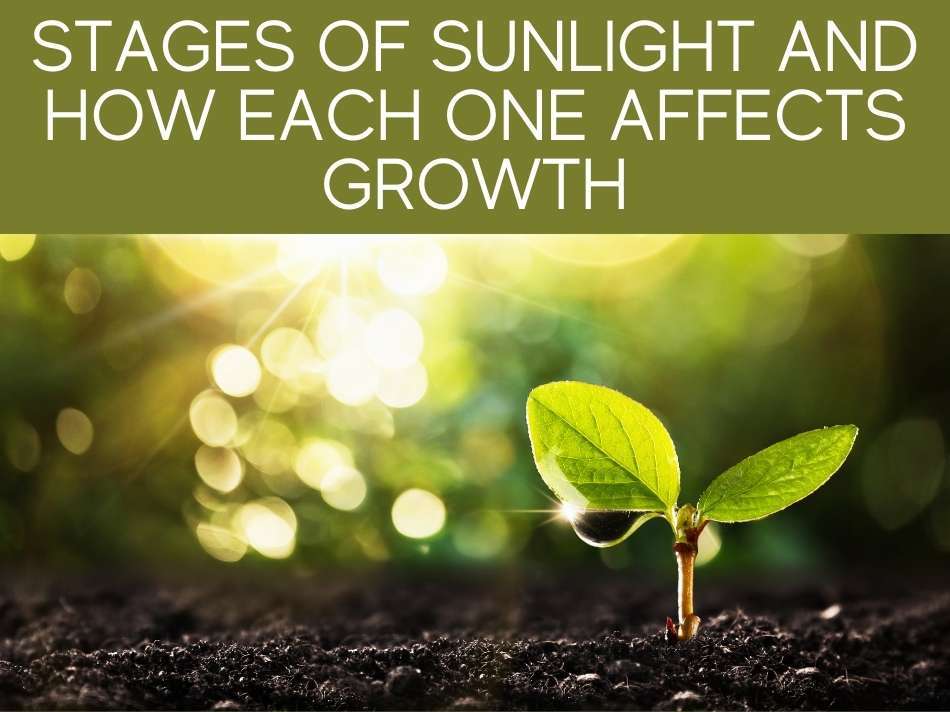
When growing outdoors under direct sun, there are different stages of sunlight that you need to be aware of.
Understanding each one can help you create the perfect environment for your tomato seedlings outdoors:
Morning Light
Morning sun provides high intensity light with minimum heat, perfect for the vulnerable seedlings.
Midday (or Noonday) Light
During 12 noon to 2pm, sun it at its highest point in the sky, giving plenty of direct sunlight for your young tomato seedlings to photosynthesize. On the downside, this is also the hottest time of the day.
If you live at a location where the temperatures rise above 90°F, use a light shade cloth over your tomato crops to prevent heat stress.
Afternoon Light
Afternoon sun also provides a good intensity of light without the heat of the midday hours.
Remove shade cloth, especially if it’s covering the west side, after 2 pm to let the seedlings benefit from the bright light.
When To Put Tomato Seedlings Under Light?
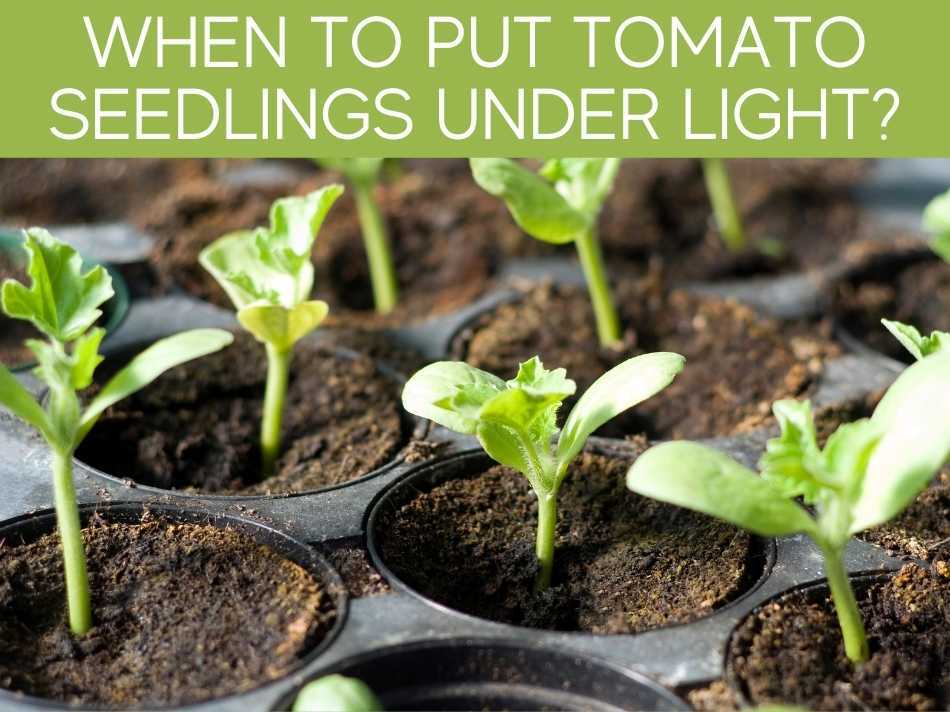
The germination phase for tomato seeds does not require any light.
Seedlings will sprout, with or without light. In other words, sprouting of tomato seeds is not dependent on light at all.
It does depend on temperature though. Place the seed tray over a heat mat at 70°F until the seeds sprout.
If you’re using a heat mat, you’ll want to check out our full article on how to use a seedling heat mat.
It generally takes between 7 to 10 days for seedlings to emerge.
Once the seedlings sprout, they will require plenty of light to grow properly.
Tomato seedlings should be exposed to light as soon as they emerge from the soil. As soon as you see the first seeds sprout, remove the seed tray from the heat mat and move it to a south-facing window.
However, in winters, even the sunniest window won’t be receiving intense sunlight for multiple hours each day.
Tall, spindly transplants are often the result of low levels of light in indoor environments.
If natural light isn’t enough, place the newly sprouted seedlings under 40W fluorescent light placed about 3 inches above the tip of the plants.
How Long To Keep Tomato Seedlings Under Grow Lights?
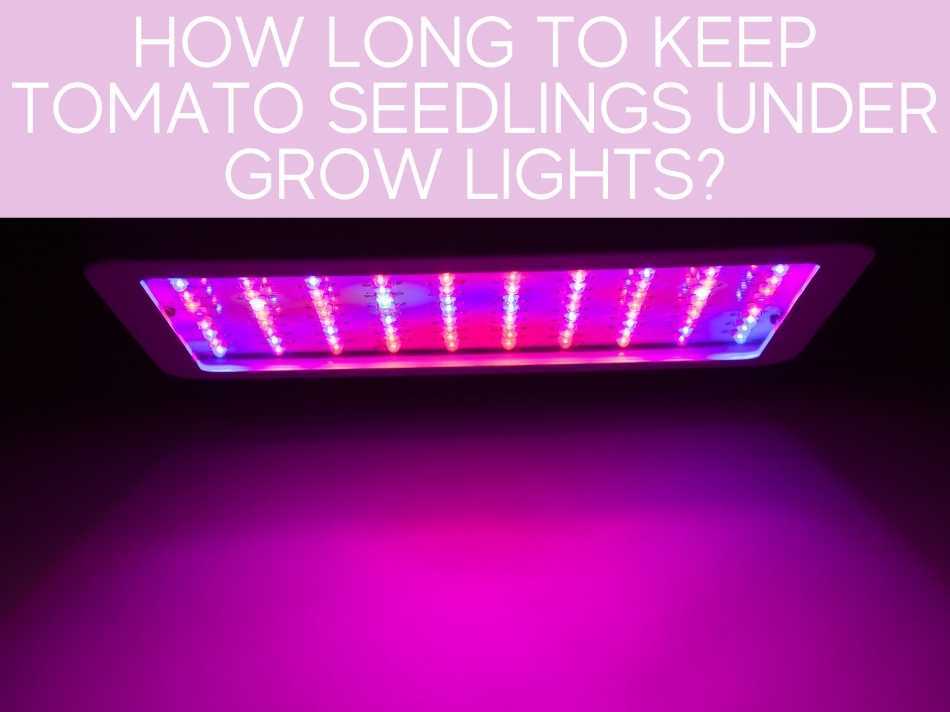
Outdoors tomato plants will grow with 6 to 8 hours of direct sunlight.
However, if you’re growing transplants indoors, you’ll need to give particular attention to the amount of supplemental lighting they receive.
14 to 16 hours of fluorescent lighting is ideal for growing healthy tomato plants and preparing them for being transplanted into the garden.
Keep the grow lights on for at least 14 hours each day and off during the evening for the remaining of the 24 hours.
This will help replicate the outdoor conditions in which plants are accustomed to thrive.
Maintain the ideal light cycle mentioned above every day until the seedlings are 3 to 4 inches tall and all dangers of frost have passed.
The soil temperatures should be at least 60°F when you plan on removing them from under the grow lights and transplanting them in the garden.
Take about a week to harden off the plants before permanently setting them out.
However, all this depends on what type of grow lights you have. We’ve got an entire article covering how many watts for grow lights for seedlings.
Conclusion
You should provide about 14 to 16 hours of bright light to your tomato seedlings for them to grow into healthy, productive plants. Be sure to consider the source of lighting and the climate of the area when creating an optimal environment for your tomato plants whether indoors or outdoors.

